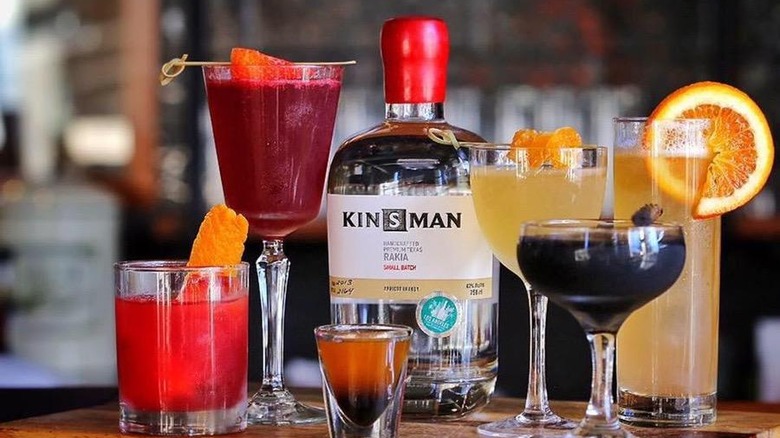What Is Rakija?
Think of it as the Balkans' answer to moonshine: Rakija, the fiery fruit brandy popular in Eastern Europe, is appearing more and more often in cocktails across North America. Also known as pálinka in Hungary and Romania, rakija is typically made from fermented and distilled fruit like grapes, plums, apricots, pears, cherries or raspberries. Sometimes it's also infused with other flavors like honey, walnuts or rose.
RELATED Can You Really Age Your Own Whiskey at Home? "
Yet when Ambar, a restaurant specializing in the cuisine of the Balkans, opened more than four years ago in Washington, D.C., it was nearly impossible to find rakija in the United States. Today, that's changing, thanks to an influx of people from the Balkans into the restaurant industry. Look hard enough today, and you'll find rakija all over the place. Ambar now offers about 70 different rakija varieties representing different flavors, countries and ages, plus an extensive collection of rakija cocktails. The 404 Kitchen in Nashville serves a drink with plum rakija, fresh orange juice and lime, while the Starlight Room in San Francisco mixes rakija with Amaro Montenegro and espresso. This spring, Toronto's Parkdale neighborhood is getting a bar inspired by Budapest's famous ruin pubs, and it also has big plans for the spirit.

Rakija Cocktail at Ambar | Photo: Goranfoto
Four years ago, Boyan Kalusevic and Chris Mobley took inspiration from Kalusevic's grandfather, who worked as a distiller in Serbia, and opened a rakija distillery in San Antonio. Today, Dorćol Distilling Company is in full swing, with an on-site tasting room serving up cocktails made with Dorćol's spirits, which can also be found in bars and restaurants throughout Texas, including Vox Table in Austin and Anvil, Coltivare and Eight Row Flint in Houston. Dorćol is hoping to expand to neighboring states in the future.
"The biggest challenge was explaining to my grandfather why we were making cocktails with it," Kalusevic jokes. Indeed, the perfumey spirit is traditionally served as a shot; it's meant to thoroughly burn the throat on its way down. In Serbia and Croatia, it's normal, if not expected, for the host to greet guests at the door with a small glass of rakija.

Rakija Gimlet at Ambar
Since the practice of using rakija in cocktails is relatively new, many bartenders have sought inspiration from classic drinks. "It's incredibly versatile," Kalusevic says. "It's got a really rich bouquet on the nose and stands up to Campari in a Negroni and works well with a Fitzgerald with lemon." The best-selling drink at Ambar, for example, is a rakija old-fashioned; the restaurant also puts its own twist on the Moscow Mule with its house Belgrade Mule, featuring plum rakija instead of vodka.
Though it may be considered sacrilege in rakija's motherland, Uros Smiljanic, Ambar's general manager, still believes cocktails are the best way to introduce American palates to the spirit. "People would crucify me back at home," he jokes. "They say, 'No way: You're going to ruin the rakija by putting it with ice and all this stuff.' But some people aren't too keen on trying straightforward liquor, and they'd rather try it in a cocktail."
